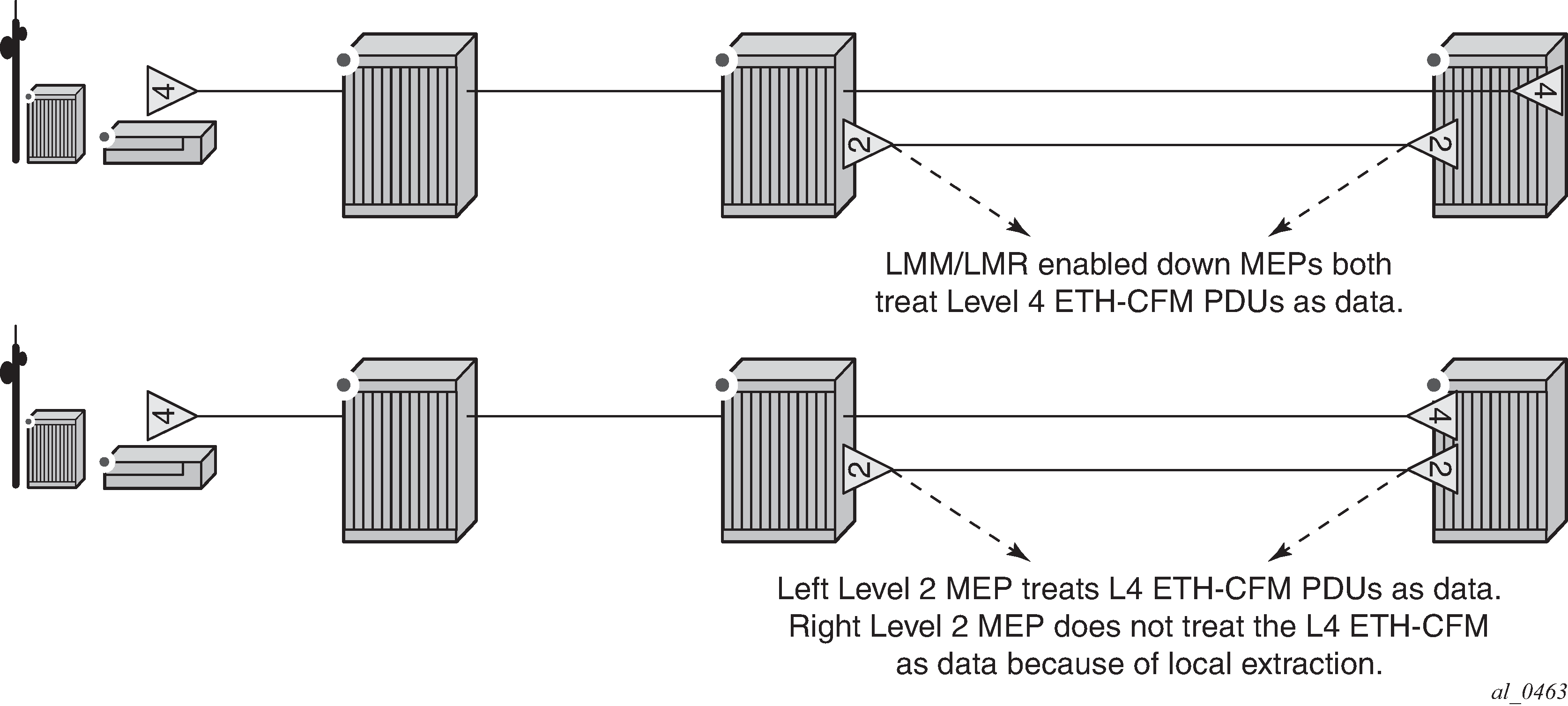A single LMM counter per SAP or per MPLS SDP binding or per facility counter is the most common option for deployment of the LMM frame-based counting model. This single counter model requires careful consideration for the counter location. Counter integrity is lost when counting incurs entity conflicts, as is typical in facility MEP and service MEP overlap. The operator must choose one type of facility MEP or the service MEP. If a facility MEP is chosen (Port, LAG, QinQ Tunnel or Base Router Interface) care must be taken to ensure the highest configured MEP performs the loss collection routine.
Configuring loss collection on a lower level MEP leads to additive gain introduced in both directions. Although the collection statement is not blocked by CLI or SNMP when there are potential conflicts, only one can produce accurate results. The operator must be aware of lower level resource conflicts. For example, a null based service SAP, any default SAP context or SAP that covers the entire port or facility resource, such as sap 1/1/1, always counts the frame base loss counter against the SAP and never the port, regardless of the presences of a MEP or the collect-lmm-stats configuration on the SAP. Resource contention extends beyond the sharing of common resources used for packet counting and extraction.
For this feature to function with accurate measurements, the collect-lmm-stats is required under the ETH-CFM context for the Ethernet SAP or MPLS SDP binding or under the MEP in the case of the facility MEP. If this command is not enabled on the launch and reflector, the data in the ETH-LMM and ETH-LMR PDU is not representative and the data captured is invalid.
The show>service>sdp-using eth-cfm and show>service>sap-using eth-cfm commands have been expanded to include the collect-lmm-stats option for service based MEPs. The show>eth-cfm>cfm-stack-table facility command has been expanded to include collect-lmm-stats to view all facility MEPs. Using these commands with this new option displays the entities that are currently collecting LMM counter.
The counter includes all frames that are transmitted or received regardless of class of service or discard eligibility markings. Locally transmitted and locally terminated ETH-CFM frames on the peer collecting the statistics are not included in the counter. However, there are deployment models that introduce artificial frame loss or gain when the ETH-CFM launch node and the terminating node for some ETH-CFM packets are not the same peers. Figure: Mismatched LMM statistical counters demonstrates this issue.
